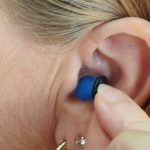Amputation in diabetic foot – how to prevent it?
Diabetes results in pathological changes in feet that lead to increased risk of ulceration, gangrene (death of tissue), and amputation. These pathological risk factors are peripheral neuropathy, peripheral arterial disease, and foot deformities. Peripheral neuropathy is due to the diminished function of nerves supplying skin, muscles, and joints resulting in numbness, muscle imbalance, and deformities of the foot. Peripheral arterial disease is due to blockage of arteries in diabetes and is associated with the occurrence of ulcers on the foot and delayed healing. Foot deformities make them more prone to trauma and pressure ulceration.
An amputation results in diminished efficiency of a person. Amputation can be prevented with better sugar control through regular treatment and better foot care through education of affected patients. The following guidelines given to diabetic patients on foot care can help in achieving the above target.
Daily feet inspection – patients are instructed to look after their feet with equal care as they take care of their face. The feet should be inspected daily for blisters, cuts, scratches, and reddened areas. A mirror can be used to see the sole and the area between the toes. If the vision is poor, help from another member of the family should be taken for the trimming of nails.
Daily feet wash – the feet should be washed daily, especially between the toes. A moisturizer should be applied to prevent the cracking of the skin.
Protection from heat – avoid taking bath with very hot water. Check the temperature by pouring a few drops over the back of the hand.
Protection from cold – during cold weather socks can provide warmth. External heating equipment like hot water bottles, electric blankets, or heating pads may cause damage or burns. They are to be avoided.
Precautions during vacations – diabetic patients should not walk barefoot on hot surfaces like beaches or on the area around swimming pools. Protective slippers should be worn while walking and also while swimming in the sea, river, or pond because sharp objects may be present on the bottom. As far as possible, they should not walk barefoot.
No bathroom surgery – do not remove corn with a blade, any chemical agent, or corn cap. Any foot problem should be dealt with by a trained person or a foot surgeon. Any adhesive tape should not be applied on foot unless prescribed by a physician.
Footwear inspection – the shoes should be well-fitting, preferably one size larger. They should be soft inside, the sole should provide adequate cushioning. The footwear should be inspected regularly for any foreign objects like nail points, torn linings, pieces of gravel, and rough areas.
Avoid prolonged soaking – prolonged soaking of feet in the water while in the bathtub may result in maceration of skin between the toes. It should be prevented.
Socks or stockings should be properly fitting. The seams should not be very prominent as they may impinge and hurt. Tight elastic at the top should be avoided as it impairs the blood flow to the foot.
Buying new shoes – shoes should be bought in the evening when the feet tend to be largest because of minimal gravity-dependent swelling. Inner comfort should be the deciding factor. Always wear shoes with socks. Sandals with stoppers between the toes should be avoided. In case of foot deformities, custom-made shoes should be worn.
Nails care – the toenails should not be cut excessively at the end as it may result in ingrowing nails. This results in recurrent infection and pain.
Quit smoking – smoking aggravates the ischemia (lack of blood flow) in the extremities and delays healing. It is advised to undergo a regular foot review by a diabetologist every 3-6 months.
Diabetes is a metabolic disorder resulting in deranged blood glucose homeostasis due to a lack of insulin. Proper and regular treatment delays the target organ damage. The diabetes specialist should be consulted if there is any foot condition so as to avoid foot ulceration and risk of amputation. Patients should be aware that amputation in the diabetic foot can be prevented by self foot control and care.




























